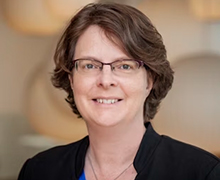Mammalian Model for Regenerative Medicine
Studying Acomys cahirinus rodents and ES cell lines to understand fibrosis versus tissue regeneration in wound healing
Technical Overview
At embryonic stages, most mammals can heal wounds without forming scar tissue, but this ability is lost shortly after birth. The key to healing without loss of function is regenerative tissue repair without fibrosis. Fibrosis is the formation of a connective tissue patch or scar in response to inflammation or injury. It can lead to abnormal function and movement. Progressive fibrosis is at the root of many degenerative diseases (e.g., chronic kidney disease, liver cirrhosis, cardiac failure).
 Dr. Kathleen Millen
Dr. Kathleen Millen
The spiny mouse, Acomys cahirinus, is the highest order vertebrate mammal to retain significant regenerative processes as an adult. In the wild, these rodents can survive a loss of 60% dorsal skin through regeneration via proliferation of multipotent cells. Instead of scarring over wounds, adult Acomys animals use regenerative wound healing to regrow the missing tissue. This ability is not limited to the skin.
Work at Seattle Children’s and elsewhere has shown than these animals also have extraordinary regenerative abilities to heal damaged ears, heart, kidney, muscle and brain tissue without scarring. Understanding how Acomys accomplishes nonfibrotic regenerative wound healing is likely to lead to novel therapies to stimulate wound healing and reduce fibrosis in humans.
Kathleen J. Millen, PhD, working with one of the very few large research colonies of Acomys worldwide, has generated several cell lines, including the first embryonic stem (ES) cell line from Acomys. Millen and team can genetically manipulate the ES cells. They have shown that instead of a scar-forming fibrotic response to injury, Acomys ear fibroblasts resist scarring in vitro.
Additionally, Millen has generated the first genetically characterized inbred Acomys line. All animals are genetically identical and can be used to analyze the effects of mutations, injury or disease, or treatments for conditions such as fibrosis or diabetes — as Acomys is also a diabetes model.
Together with Mark W. Majesky, PhD, the Millen lab continues to develop Acomys models and cell lines, including using CRISPR technology to engineer animals and cell lines for investigating fibrosis-controlling targets. Some cell lines will contain fluorescent reporters for use in high-throughput screening of drug candidates.
Millen is interested in industry partnerships to collaborate on creating more cell lines and animal models. She is also interested in collaborating on a platform to use the cell lines for high-throughput screening to develop drugs, for example for wound healing, fibrosis or diabetes.
Stage of Development
- Pre-clinical in vitro or in vivo
Partnering Opportunities
- Consultation agreement
- Tissue samples, cell lines, animal models, data
- High throughput screening
- Drug development
Publications
- Brewer CM, Nelson BR, Wakenight P, ... Millen KJ, Majesky, MW. Adaptations in Hippo-Yap signaling and myofibroblast fate underlie scar-free ear appendage wound healing in spiny mice. Dev Cell. 2021;56(19):2722-2740.e6.
- Okamura DM, Brewer CM, Wakenight P, ... Millen KJ, Beier, DR, Majesky, MW. Spiny mice activate unique transcriptional programs after severe kidney injury regenerating organ function without fibrosis. iScience. 2021;24(11):103269.
- Nguyen ED, Fard VN, Kim BY, ... Millen KJ, Tollis M, Miller DE. Genome Report: Chromosome-scale genome assembly of the African spiny mouse (Acomys cahirinus). bioRxiv. 2023.04.03.535372.
Learn More
To learn more about partnering with Seattle Children’s Research Institute on this or other projects, email the Office of Science-Industry Partnerships.
